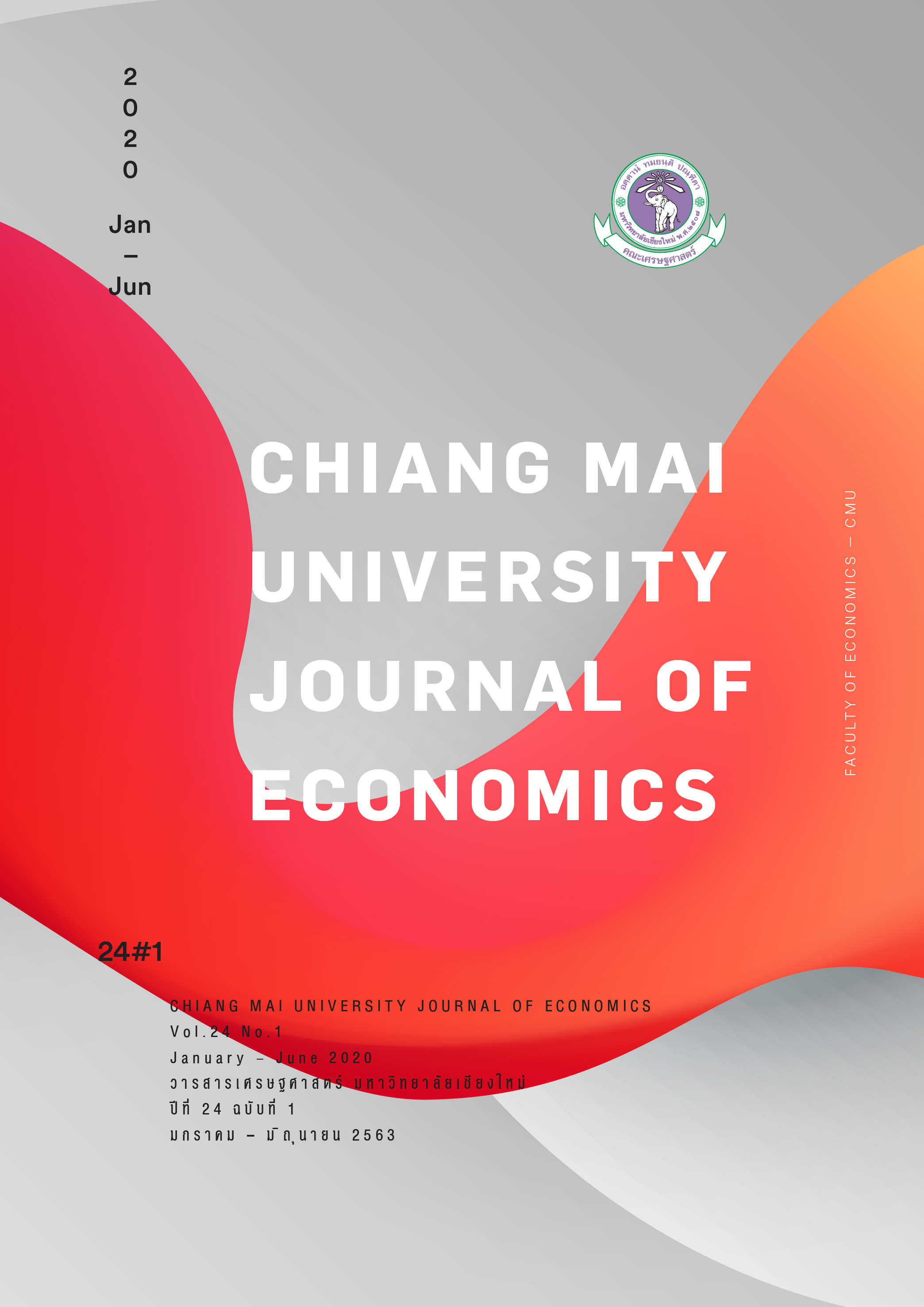The Economic Impacts of Chinese and European Tourists Spending in Thailand
Keywords:
economic impacts, tourists spending, Chiese tourists, European touristsAbstract
This article aims to analyze the different economic impacts of the spending value of Chinese tourists (emerging markets) and European tourists (mature markets) by applying the input-output analysis to assess these impacts. The expense data in accordance with the expense structure of Chinese and European tourists in 2016, as reported by the Department of Tourism, including the data from the tourism input-output table at producer prices for the year 2010, prepared by the Department of Tourism, is used in this analysis.
Results of the study indicated that the differences and changes in the spending structure of Chinese and European tourists have a different effect on the various economic sectors in the Thai economy. Some sectors need to expand the production to meet the increasing needs of Chinese tourists compared to European tourists. While some have to reduce the production due to the decrease in final demand resulting from the lower demand of Chinese tourists compared to European tourists. The non-touristic economic sectors that need to increase the production are runber, chemical, petroleum industries and plastic, banking and insurance and other services. The sectors that have to reduce the production a lot are the non-metallic, metal products and machinery, food manufacturing and agriculture. For the touristic economic sectors which requires a lot more production are retail trade of country specific tourism characteristic goods and other country specific tourism characteristic activities. While accommodation for visitors, road passenger transport, and food and beverage serving activities are the service sectors that have to decrease the production according to the less demand of Chinese tourists compared to European tourists.
References
Miller, R. and Blair, P. (1985). Input-Output Analysis: Foundations and Extensions. New Jersey: Prentice-Hall.
Somboonpanya, B. (1980). Thailand’s Interzonal Input-Output Tables with Reference to East Thailand. United Nations Asian and Pacific Development Institute.
Untong, A. (2016). The dynamics and stability of the elasticities of demand for Thailand’s long-run tourism for Chinese tourists’ market. Jornal of Economics and Management Strategy, 3(2), 1-16. (in Thai)
Untong, A., and Kaosa-ard M. (2015). The competitive advantage in toruism of ASEAN in Chinese tourists’ market. Journal of Economics and Management Strategy, 2(2), 65-69. (in Thai)
Untong, A., Kaosa-ard M., Pongpatcharatorntep, D., and Anantanasa, N. (2018). A Tourism Demand Chain Analysis of the Chinese Tourism Market (Year 2: The Impact of the Expansion of the Chinese Market in Thailand). Full report. Chiang Mai: Public Policy Studies Institute Foundation. (in Thai)
Untong, A. and Guntawongwan, K. (2019). Change in the market structure and opportunities of Thai tourism in the main foreign tourist markets. Chiang Mai University Journal of Economics, 23(2), 65-94.
UNWTO. (2011). Tourism Towards 2030/ Global Overview. Madrid: UNWTO.
UNWTO. (2018). UNWTO: World Tourism Barometer. 16(January, 2018). Madrid: UNWTO.
Wattanakuljarus, A. (2012). Tourism: Economy-Wide Perspectives. Chiang Mai: Public Policy Studies Institute. (in Thai)
Downloads
Published
Issue
Section
License
All opinions and contents in the CMJE are the responsibility of the author(s). Chiang Mai University Journal of Economics reserves the copyright for all published materials. Papers may not be reproduced in any form without the written permission from Chiang Mai University Journal of Economics.
ข้อคิดเห็นที่ปรากฏและแสดงในเนื้อหาบทความต่างๆในวารสารเศรษฐศาสตร์มหาวิทยาลัยเชียงใหม่ ถือเป็นความเห็นและความรับผิดชอบโดยตรงของผู้เขียนบทความนั้นๆ มิใช่เป็นความเห็นและความรับผิดชอบใดๆของวารสารเศรษฐศาสตร์ มหาวิทยาลัยเชียงใหม่
บทความ เนื้อหา และข้อมูล ฯลฯ ในวารสารเศรษฐศาสตร์มหาวิทยาลัยเชียงใหม่ ถือเป็นลิขสิทธิ์เฉพาะของคณะเศรษฐศาสตร์มหาวิทยาลัยเชียงใหม่ หากบุคคลหรือหน่วยงานใดต้องการนำทั้งหมดหรือส่วนหนึ่งส่วนใดไปเผยแพร่ต่อหรือเพื่อกระทำการใดๆ จะต้องได้รับอนุญาตเป็นลายลักษณ์อักษร จากวารสารเศรษฐศาสตร์ มหาวิทยาลัยเชียงใหม่






